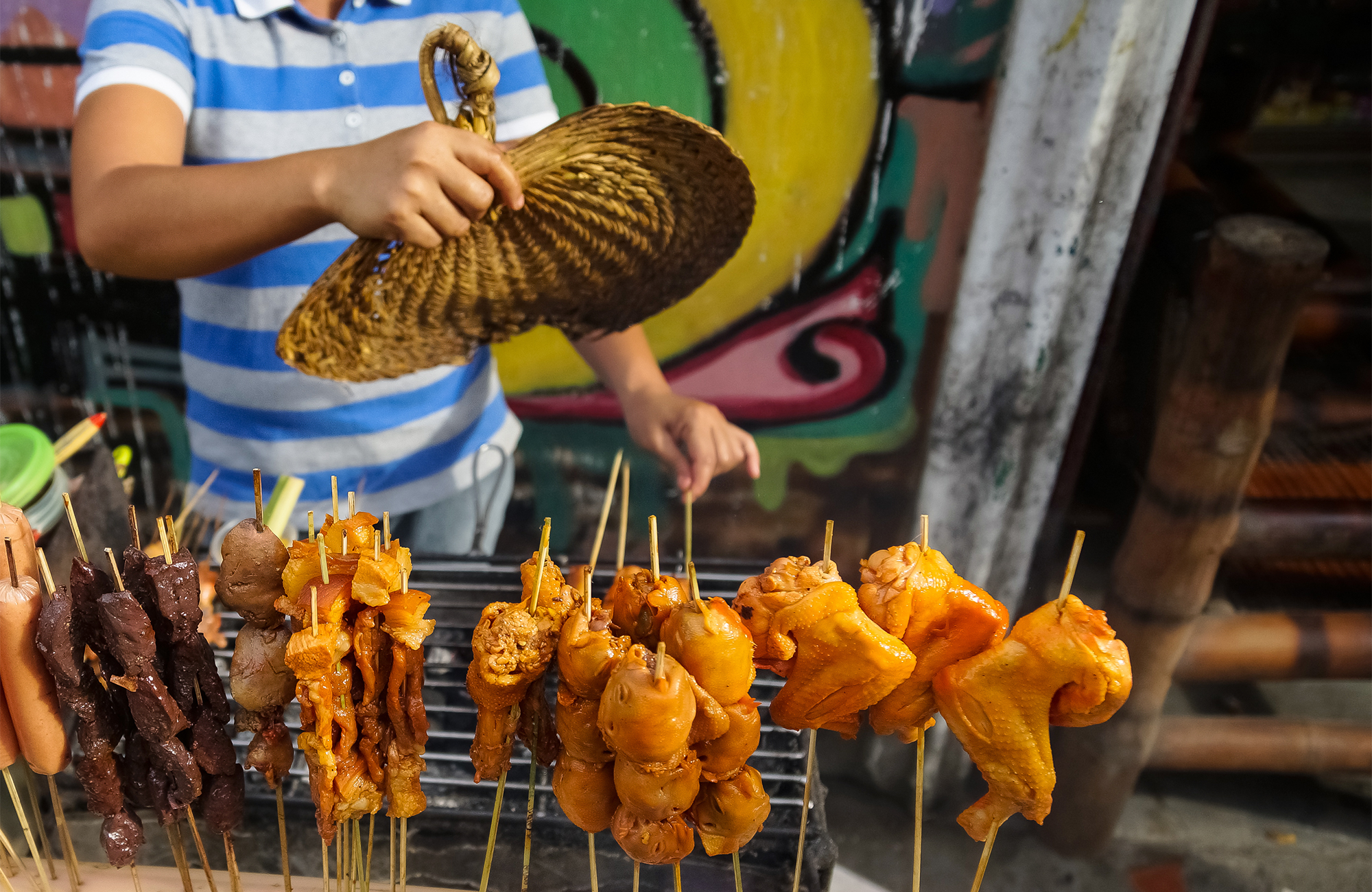The capital often serves as an intermediate stopping point to people traveling to other destinations. However, Manila offers plenty of things to see, so it is worth spending a couple of days discovering this huge metropolis and find the hidden spots.
Numerous museums, churches and palaces can be found in Manila. The city’s historical sites are mainly found in the old Spanish town - Fort Santiago in Santa Clara ST. Intramuros might be worth visiting and so is Rizal Park, which is the country’s most important park. There you can find the National Museum of the Philippines, Chinese and Japanese gardens, Butterfly Pavilion and all kinds of cultural performances. If you’re interested in Filipino culture, head to Ayala Museum (Makati Ave.), which offers a good exhibition of the country’s history and art. Through a guided tour, you’ll learn a lot about the country. There are nice cafés just around Ayala and the Greenbelt Complex (shopping malls) and a park area.
Culture and shopping the Manila
Do you want to experience some high quality Filipino ballet performances or philharmonics concert? The fascinating Cultural Center Of The Philippines in Roxas Blvd in Malate can offer you a whole variety of different performances. There’s also a theme park called Star City.
Visit the wealthy Chinatown in the district of Binondo and take a walk on the popular Ongpin St. Enjoy the numerous teahouses and eat well in one of the many smaller restaurants. If you want to see something different, head to the Chinese cemetery, where even the dead are “well-doing” - you will understand when you see the ultra modern massive tombs with all the real life facilities such as toilets…The Cemetery has some really old graceful Chinese buildings such as Chong Hock Tong Temple built in 1850. As you can expect from a modern city, you’ll find all services operators such as banks, post offices and hospitals as well as shopping malls, restaurants and bars. Manila really is a shopper’s paradise; you’ll find huge malls with quality staff - so don’t pack bring too much from home! There are lots of shops in the city’s financial district center of Makati. Hungry for wild nightlife? Then Makati and Malate are your places to be where all the clubs with cool DJ´s play some funky music. After tiring shopping marathon, you can head to the Batangas beach to enjoy the most amazing sunset from the Baywalk.
Activities in the Philippines
You can hike up the famous Mount Pinatubo, which is located about 2-3 hours from the city. Another idea would be to head to Pagsanjan waterfalls for swimming. You can combine some canoeing to this daytrip too. Lake Taal to do some horse riding. Some people say this area is nicer to explore by horse than hiking at least during the rainier season when the trails get very muddy.
Moving around
Arriving to the International Airport Ninoy Aquino, the first sensation is confusion in chaos and long lines of people. Don’t worry, the airport is not far from the city center and once you sit in the taxi, things start to seem more interesting.
The traffic in Manila is super chaotic and you’ll feel the problems of urban sprawl. Consider twice the car rental. However, by using the Light Rail Transit system you can escape this mess. There’s two lines: L1 runs between Monumento and Bacalaran, L2 runs between Santolan to Recto. There’s the Metro Rail Transit that is very convenient as well. Using these is faster and less nervewrecking than getting stuck in the traffic with jeepney, bus or a taxi. MRT´s and LRT´s get packed as hell, turning them into a pickpocketer's heaven, so keep an eye on your belongings.
Don’t use the train between Manila and Bicon because it’s irritatingly slow and might get dangerous too.
When to travel to Manila
The weather in Manila is very warm all year round. Note the typhoon season from June to November.
Travel tip
Watch out for your luggage in the airport because there’s going to be people trying to offer help carrying it and ask for money afterwards.
If you know Spanish and English, you’ll be fine since the locals speak these languages quite well thanks to its colonial history.


